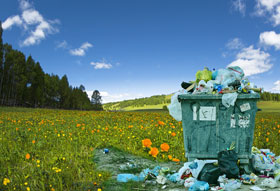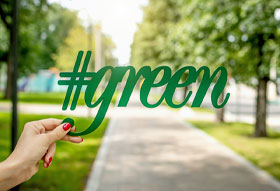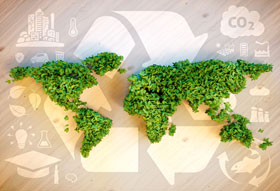
Foam in the News: Chemical Recycling of Polyurethane Foam

Sustainability and recycling are at the forefront of the foam sector, and there are innovations in development by the day. We often hear problems around plastic bags, bottles and single-use plastics, and the solutions to such issues are already well publicised. However, in addition to this, the foam sector is also making a significant impact in sustainability, recycling the polyurethane foam used in mattresses, shoes and upholstered furniture, among other applications.
At eFoam, we enjoy keeping up to date with the latest innovations taking place within our sector. We're pleased to see that so many of today's developments in the foam industry concern new and sustainable practices, ranging from recycling methods to improving products' efficiency. In the latest instalment of our 'Foam in the News' series, we're pleased to report on a fantastic new development from global energy company Repsol.
Repsol Circular Economy Solution
In the past, the most common methods for disposing of polyurethane foam were incineration and sending it to landfill. This is not a practice we promote, and we're pleased to see the industry shifting away from this as more of us become environmentally conscious. What is also helping to change attitudes is the enforcement of new environmental regulations for disposing of such products. As a result, the industry is moving to alternative options like physical and chemical recycling.
By the end of 2022, Repsol is developing and building Spain's first specialist plant for the chemical recycling of polyurethane foam. What is significant about this build is that the plant will be capable of processing over 2,000 metric tons of waste per year – a fantastic number that will help to reduce the quantity of Foam that is sadly sent to landfill. To get the plant up and running, Repsol has pledged a €12 million investment.

The chemical recycling to be used by Repsol is based on the principles of the 'circular economy. In other words, the use and re-use of one single material are endless, no matter how many times it is recycled. The company is hoping to recycle polyurethane foam by producing circular polyols from it – the raw materials commonly used in the manufacturing of any polyurethane foam products. By working with the core elements of such Foam, Repsol's new plant will take full advantage of a sustainable recycling 'circle'.
Many companies like Repsol have been turning their attention to the development of sustainable manufacturing and recycling processes. Repsol, in particular, is transforming its industrial processes and is turning its production centres into multi-centre hubs that are hoping to achieve a low, zero, or carbon-negative footprint. Repsol has already announced it is to dedicate €700 million to circular economy projects until 2025.
Covestro Circular Economy Solution
One of the world’s leading providers of polyurethane foam is working with global partners to embrace the ‘circular economy’ supply chain. The plan is for the PU materials used to be forever recyclable in an infinite lifecycle. Covestro, a polymer production company, has named this new activity ‘smart chemolysis’. It uses chemical engineering principles to deteriorate polyurethane foam back down to the original elements used in its construction.

A historic challenge encountered when chemically recycling polyurethane foam was that it decomposes at high temperatures, meaning that unlike lots of other materials, it cannot be melted. Given the versatility of this foam, it has never needed to be broken down as it has always been recycled in alternative ways, such as repurposing and processing it into crumb foam that is frequently used in public transport and hospitality seating. Covestro is developing another method to add to the recycling methods commonly used by the sector, except Covestro is now investigating the use of chemical catalysts to break the foam down into polyol and TDA.
Covestro is currently undertaking this work in Leverkusen, Germany, and it is likely to span throughout Europe if successful. In addition to the process that breaks down polyurethane foam, Covestro is also developing a process to recover and recycle TDS (toluene diamine), a key component of polyurethane.
In addition to the chemical innovation underway with the company, Covestro has also been praised for how it sorts foam at the very start of the process. Covestro’s primary focus at present is to chemically recycle polyurethane foam commonly used in mattresses. Given that many mattresses include many different parts, Covestro has pioneered a technology that uses algorithms to identify and sort various foam parts within a mattress. Their technology separates the different types of foam to remove some pieces treated with additives and fillers. These foams are then dealt with separately.
The work of Covestro is just a small snapshot of the wider recycling and sustainability initiatives currently underway throughout the foam sector. For example, Dow, a chemicals company, is also investing in their own research to chemically recycle polyurethane foams and other materials. The company is focusing on recovering polyols in particular – the additional building blocks for foam – and hopes to supply its recycled polyols to the commercial sector this year.

Sustainability is at the heart of eFoam operations, and eFoam is proud to only work with suppliers and other companies that manufacture their resources via sustainable materials and methods.
We're pleased to see such a strong commitment from some of the world's largest companies to develop their sustainable practices – especially when they relate to Foam. However, we are also happy to support the development of products made from off-cuts and other unwanted foam parts. Lots of excess foam is repurposed into crumb foam by compacting various pieces together, and it is commonly found in a range of furniture as standard. Products that use crumb foam include pub seating, public transport seating, gym mats, crash mats and church kneelers. It can also be used for packaging and sound insulation. It is a durable, long-lasting and resilient material that is a brilliant option for companies looking to use recycled foam off-cuts.
For more information on our own sustainable and environmental practices at eFoam, please contact one of our friendly advisers.

